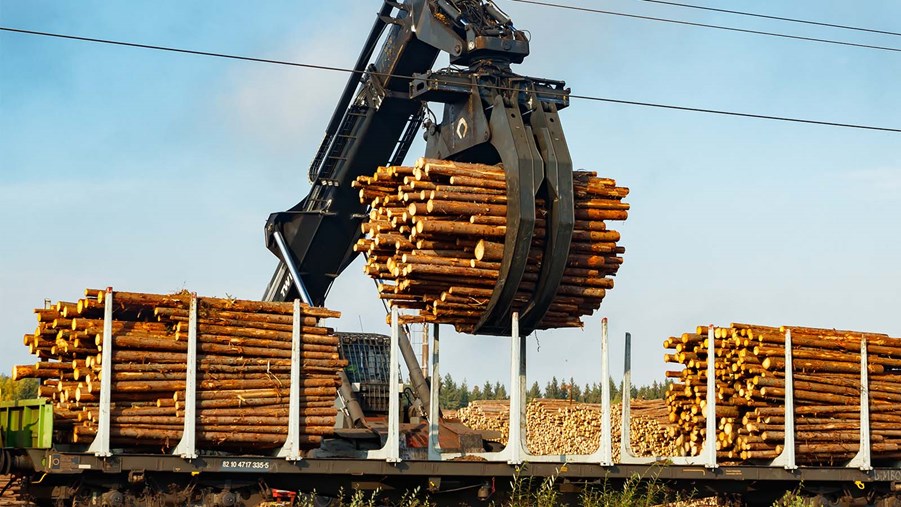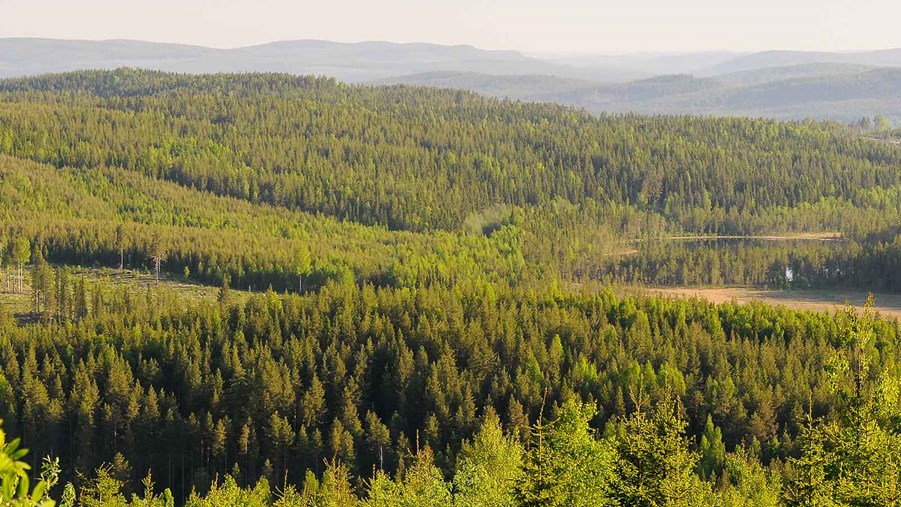
Forests have not only been significant for welfare growth in Finland and Sweden historically. Today, they play a key role in the green transition at a time of geopolitical uncertainty when the need for self-sufficiency is increasing.
“A successful forest industry has an extremely positive impact on businesses, employees, communities and the likelihood of achieving the global climate goals,” says Emil Lemström, Macroeconomic Expert at the Finnish Forest Industries Federation.
The export-heavy forest industry is one of Sweden’s most important sectors. As the raw material is mostly domestic and the import of input goods is relatively small, the forest industry makes a significant contribution to the country’s balance of trade. Between 70 and 90 per cent of production is exported, which makes Sweden one of the world’s top five exporters of forest industrial products. The sector accounts for almost 10 per cent of Sweden’s total goods exports.
“Major changes affecting extraction from forests have immediate consequences for Sweden’s economy,” says Jörgen Kennemar, Forestry Expert and Senior Analyst at Swedbank.
The forest industry creates wealth
In Finland, dependence on the forest industry is even greater, where the sector accounts for approximately 20 per cent of the country’s total goods exports.
“Relative to its size, Finland is the most forest-dependent country in the world. In Sweden and Finland, the forest sector has historically created wealth and continues to do so. The global, national and regional impact on the two economies is considerable. A successful forest industry has an extremely positive impact on businesses, employees, communities and the likelihood of achieving the global climate goals,” says Emil Lemström, Macroeconomic Expert at the Finnish Forest Industries Federation.
A zero-sum game
According to a report from Afry the global market for forest industrial products is expected to grow by up to 175 billion euros by 2035.
“If access to forest industrial products is no longer available in Sweden or Finland, production will instead increase elsewhere in the world. From a climate point of view, this can also have a negative impact,” says Lemström.
Before Russia’s invasion of Ukraine, Finland imported large amounts of timber from Russia. Sanctions have put an end to that trade.
“The war has changed our markets. We’ve had to replace ten million cubic metres of annual raw material mainly from the domestic market, but also from other parts of the Baltic Sea region,” says Lemström.
In addition, wood that was previously imported from Russia is now considered conflict wood and may not be sold in the EU either.
“Global imports and logistics are becoming increasingly complex and risky, both from an economic standpoint and from a sustainability standpoint,” explains Kennemar.
Large numbers of private forest owners
Forty-eight per cent of Sweden’s forest land is owned by private individuals, 21 per cent by the public and 24 per cent by companies. In Finland, private individuals own significantly more and private companies significantly less, making it more difficult to control forest policy.
“In Finland, our current government has clearly stated that forest owners must continue to be able to make decisions for themselves. This is a constitutionally protected right,” says Lemström.
In Sweden, forests and forest products currently contribute to reducing the climate burden by around 94 million tonnes of carbon dioxide equivalents (CO2e) every year. The forest sector’s climate benefit is thus twice as high as Sweden’s total emissions of greenhouse gases.
“The Nordic forest industry has unique characteristics to be part of and drive development towards a bioeconomy – it has natural resources, skilled innovators and a strong willingness to invest in a fossil-free society. We need to use more – not less – inputs from Nordic forests if we are to be able to replace fossil products and achieve the climate transition,” says Kennemar.
Collapsed supply chains
Further reductions in felling would result in renewed pressure on the Swedish and Finnish forest economies.
“In Finland, the wood raw materials supply chain is largely domestic and consists of contractors,” says Lemström, adding:
“A decision to significantly limit felling – as some are calling for – would weaken the timber supply chain’s capacity to deliver; uncertainty about the future reduces entrepreneurs’ confidence in the sector and willingness to invest.”
The importance of the forest industry to welfare
The forestry industry currently employs a total of around 120,000 people in Sweden and 100,000 in Finland. The taxes that those employed in the forestry industry pay to municipalities and county councils are of substantial importance to Swedish welfare. The regional significance is particularly pronounced in Västernorrland, Gävleborg, Värmland and Jönköping, where the forest industry accounted for up to 12 per cent of the value added and approximately seven per cent of the number of people employed in 2019. Source: Välfärdsrapporten Figures from 2019, in Swedish.




